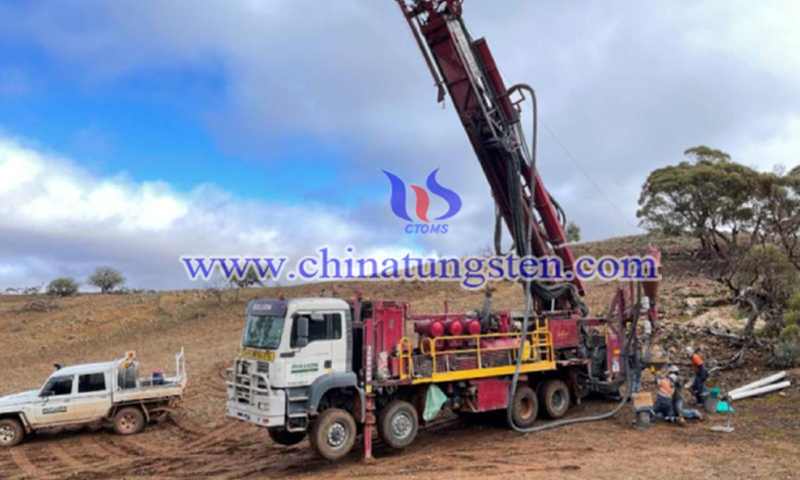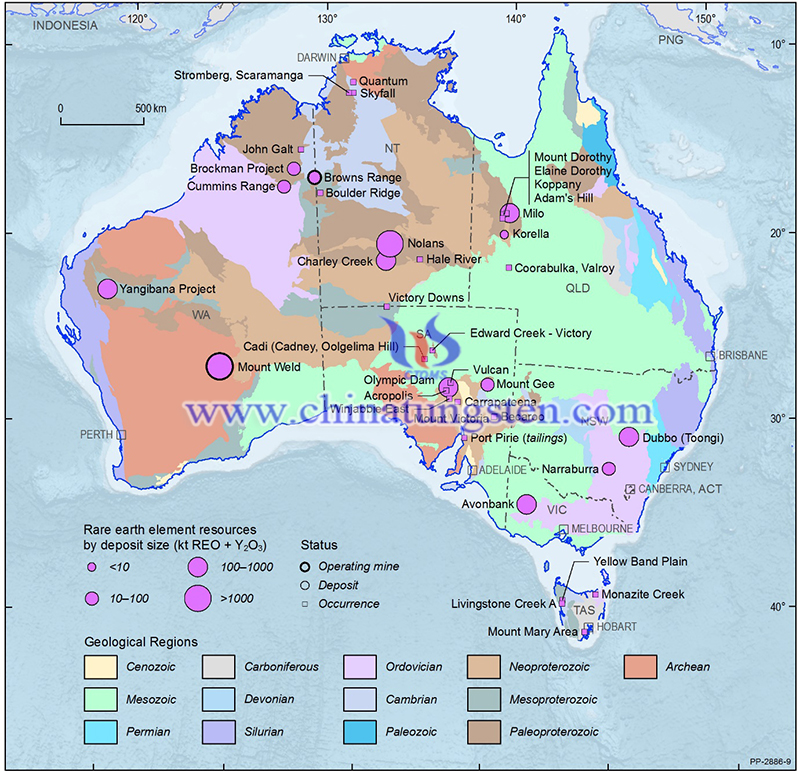South Australia Becoming ‘Holy Grail’ of Rare Earths Space
- Details
- Category: Tungsten's News
- Published on Tuesday, 14 June 2022 22:53
The rare earths (REE) target is ionic adsorption clay deposits located in South Australia (SA), and these clays contain four key elements used in magnets for electric vehicles and wind turbines: neodymium, praseodymium, dysprosium, and terbium.
In electric vehicle (EV) motors, a typical NdFeB magnet consists of 29 to 32 percent neodymium and praseodymium, with an additional 4 to 9 percent by mass of terbium and dysprosium. However, the latter two elements increase the maximum operating temperature of the magnet from approximately 60 degrees Celsius to 240 degrees Celsius, which is a critical factor for EV traction motors.

This means that ionic clays are economically more attractive than hard rock rare earth deposits. Unlike hard rock deposits, these clay deposits are shallow, require negligible blasting, do not involve crushing or grinding, and have no radioactive tailings of uranium or thorium to deal with. That's why Christopher Ecclestone, a mining analyst with London-based Hallgarten & Co, recently called ionic clay deposits the "Holy Grail" of the rare earth sector.
The relative ease of mining these clays, and the resulting improved economics of rare earth production. At the same time, China's heavy rare earths are being depleted. This supply crisis was foreseen in a 2013 paper by the Department of Environmental Science and Engineering at Peking University, which stated that China's heavy rare earth resources will be depleted within 10 to 15 years.
The clay deposits were discovered in Ganzhou, Jiangxi Province in 1970 and subsequently in other southern provinces such as Guangdong, Fujian, Zhejiang, Hunan, Guangxi and Yunnan. The main ore bodies are located between 5 m and 30 m from the surface and can therefore be mined by open pit mining followed by heap leaching to extract REEs.
Although these clays represent only 2.9% of China's total rare earth reserves, they are vital to the country; they accounted for 26% of total rare earth production between 1988 and 2007, rising to 35% in 2009. However, production has declined recently as the country has implemented stricter environmental controls and cracked down on illegal mining.

South Australia's breakthrough comes against the backdrop of China's tightening control over REEs, which is now tightly controlled by the merger of three Chinese producers - China Minmetals Rare Earths Corporation, Aluminum Corporation of China Rare Earths Metals Corporation, and China Southern Rare Earths Group.
Earlier this month, Taruga Minerals reported that samples from its Morgan's Creek project in the Adelaide Fold Belt have confirmed the presence of high value REEs in the clay. The company said total rare earth oxide (TREO) recoveries averaged 85% and high-value magnet TREO recoveries were 93%.
SA's ionic clays are more attractive than hard rock rare earth deposits. Also, this month, Resource Base announced what it called “extremely” good results from shallow hollow drilling at its Mitre Hill project, located in the Murray Basin, which straddles the border between Victoria and SA.
Drilling revealed mineralization at 3 meters from the surface with 1 meter of TREO at 1421 ppm and another drill hole intersecting 1 meter at 1090 ppm (5 meters from the surface).
In mid-May, iTech Minerals also had success at its Ethiopian kaolin property on the Eyre Peninsula. Reporting assay results from the first 23 of 115 holes, the company said the results confirmed significant amounts of rare earth elements in the clay, including 1057 ppm over 12 meters at 7 m. All of these drilling discoveries have contributed to making South Australia a hot spot.
- Rare Earth Manufacturer & Supplier, Chinatungsten Online: www.chinatungsten.com
- Tungsten News & Prices of China Tungsten Industry Association: www.ctia.com.cn
- Molybdenum News & Price: news.molybdenum.com.cn
- Tel.: 86 592 5129696; Fax: 86 592 5129797; Email: sales@chinatungsten.com



 sales@chinatungsten.com
sales@chinatungsten.com